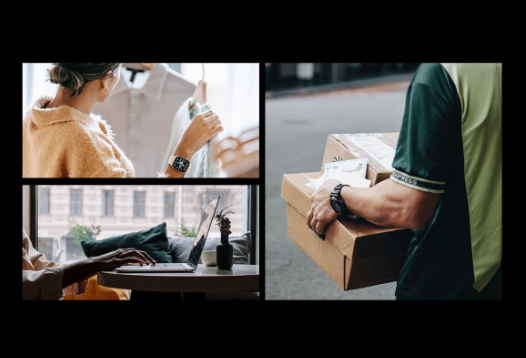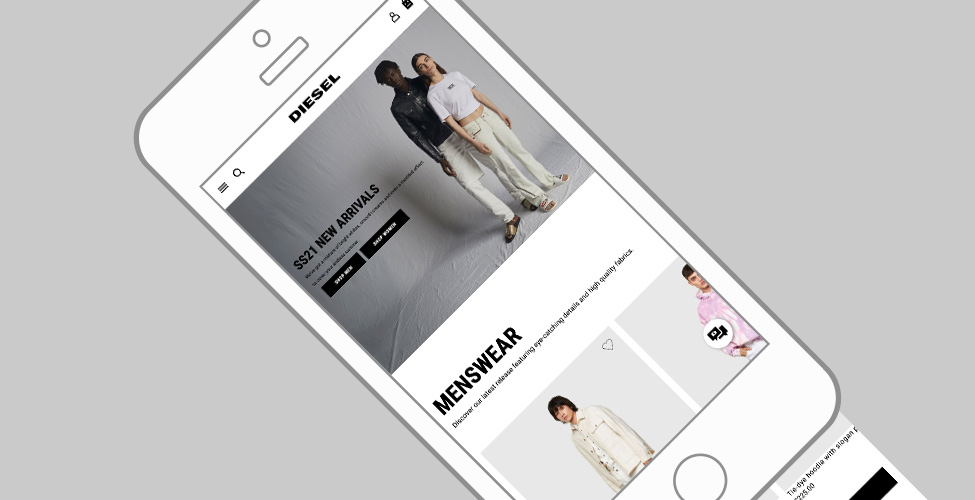Buzzword that has been around
Even if you have, it’s one of those buzzwords that has been around for a long time, without many people really understanding its true meaning.
Retail experts have long advised brands that offering their customers an omnichannel commerce experience was the key to the future, but how many really listened or acted?
Now, after years of talking about it, the fact that it’s happening all around us seems to have been largely ignored.
The COVID pandemic has seen many brands speed up their omnichannel plans, or, in many cases, forced them to adopt them.
The question has now become not whether your brand should adopt it, but whether you can afford not to.
Here, Redbox takes a look at what omnichannel means today – and what businesses should be doing to offer the most seamless omnichannel shopping experience for their customers.
What is omnichannel commerce?
While a multichannel strategy refers to a brand connecting with its customers over multiple, but ultimately separate, channels, an omnichannel approach sees these channels connected to provide a seamless customer experience.
You may search for an item on a brand’s digital store and be directed to the nearest physical store that has it in stock – or, perhaps see something on a brand’s social media feed, buy it on their website, but opt for click and collect.
Whatever the experience, an omnichannel strategy unifies all these channels. It means a customer can expect the same brand experience along every touch point whether on or offline.
Think email, marketing, social media channels, mobile, online and physical store, all carrying the same brand messages, giving the customer the same experience and providing a sophisticated, personal experience across them all.
The Rapid Rise of an Omnichannel Approach
According to a recent report by McKinsey, more than a third of Americans have made omnichannel purchases – such as buying online for in-store pick-up – part of their regular shopping routine since the pandemic.
Most Gen Z consumers don’t even think about traditional channel boundaries according to the report – they expect to be able to shop how they want and will quickly turn away from retailers who don’t cater for their needs. Whether this means paying by Apple Pay, or making quick purchases through links on social media feeds, Omnichannel is happening everywhere around us.
Today, consumers expect a seamless, connected experience from whatever channel they are using and then to receive the service or product, fuss-free. They want to be able to buy online and return in store; buy on an app and pick up in 5 minutes: convenience and experience are key.
Uber helps get customers wherever they are from A to B by using an app and without the need for bank cards or cash; Starbucks allows you to order and pay for your Latte online so it’s ready and waiting for you as soon as you get there; grocery apps such as Gorillas allow consumers to get their groceries quicker than the supermarkets can even deliver – within 10 minutes, in some UK cities; even pub chains like Wetherspoons allow customers to buy their pints on an app and have them delivered to anyone at another Wetherspoons pub.
From a brand perspective, it is clear that more businesses are investing in their digital solutions to ensure a seamless link between their online and offline operations.
Redbox’s CEO, Jonty Sutton, said: “There were distinct camps around offline and online. This pandemic has forced a lot of that to be flushed through, and as the stores re-open, it’s taking some of that technology, that experience and expectation back in-store. Being able to be in a store and understand my digital profile is much more of an expectation from a customer now. Whether it’s in loyalty, payment, returns or anything else, it’s much more connected now.”
Getting the most our of an omnichannel strategy
Offering a seamless omnichannel experience can be the difference between a sale and an abandoned basket; the difference between a customer staying loyal to your brand for years to come, or leaving a bad review. However, it’s a tricky process to get right. Where do you start? What are the priorities? Do you really need to offer next day deliveries and returns when the cost is so high?
If you are considering upgrading your digital solutions to offer a true omnichannel experience for your customer, here are some things to consider:
Get the foundations right
It might seem obvious, but implementing an omnichannel strategy takes real planning and can involve dissecting your business from top to bottom and often re-platforming. What can seem like a lot of hassle and disruption, can save you years of problems and extra cost down the line.
It’s no good deciding you want to add a more connected element to your business if you can’t support it when it’s up and running. Click and collect is fast becoming a big part of a omnichannel experience, but do you have the warehouse and customer service staff to avoid long customer queues? Does your platform and warehouse support the logistical capabilities needed to ensure a seamless solution?
While some brands are happy to add a number of different elements to their digital operations as they go along, or are happy to add a host of elements to their platform in case they need it in the future, this can often cause more issues later on.
The key is getting the foundations right and more often than not, this can mean re-platforming. Gone are the days when moving to a new platform takes a year of the company’s time and their best ecommerce operatives out of action for months on end.
Hamleys and Daylesford recently moved to Adobe Commerce – implementations that took just three months from discovery to launch utilising Redbox’s Ignite framework.
Redbox’s Commercial Director, Kevin Ludford, said: “Customers are often unsure what their ecommerce priorities will be in the mid to long term. Rather than add everything you think you might need and designing a complete solution that might not be right for the business, Redbox Ignite enables the platform to be up and running and fully functional in a matter of months, gets the staff to merchandise and work with the platform daily and decide what they’re missing or what further requirements they need.
“It cuts costs, stops wastage and gets the online store up and in the quickest time possible.”
Explore ways to connect the digital with the physical
With so much time and effort going into digital right now, it can be easy to think brick and mortar stores have had their time.
However, more brands are finding ways to connect online and offline in unique ways. For customers, this provides a connected seamless experience and added value; for brands, it gives customers a reason to go in store and promotes brand loyalty.
In April, Amazon opened its Amazon Salon in London, trialling the use of augmented reality (AR) and ‘point-and-learn’ technology.
Amazon Salon
The AR technology allows customers to experiment by virtually trying on different hair colours before deciding on a new shade. This experience gets customers talking and into store, but is also a really useful tool.
The ‘point-and-learn’ tech allows customers to point to products on a display shelf in order to learn more about them through video and content that displays on screen. Customers can then scan a QR code to add it to their Amazon account cart and check out.
Moving away from physical stores, Nike’s Run Club apps help people arrange meet-ups, events and running groups. They have numerous apps that encourage these types of social and physical interaction, again bringing added value to the consumer and promoting brand loyalty in the long-term.
In a recent partnership with Beside Group, Redbox built a custom-built order management system for the Diesel platform in the Middle East.
This sourcing logic helped knit everything together to provide the omnichannel experience they were looking for.
Now, if a customer orders three items online and two are available in one store, the other can be sourced from the nearest store to the customer quickly. It also allows shoppers to click and collect, shop online and buy offline in any store and return items remotely by the website or in-store.
Brands must go further in blending the digital and physical, online and offline, to offer their customers a true omnichannel experience.
Redbox built a custom-built order management system for Diesel platform in the Middle East
Streamline your core products
With so many things to consider, it’s easy for brands to try to do too much too soon or implement too many things quickly.
To combat this, many brands are cutting back on the products they offer, prefering instead to focus on smaller ranges.
Jonty said: “The pandemic has made brands concentrate on core products and focus on where they are making the most money. They are now investing in tools and technology to improve the customer experience, but around a smaller range.
“Brands are making less wholesale changes and more tactical execution developments, focusing on two or three areas for improvement. It’s much easier for them to manage.”
Expanding your payment options
One of the biggest changes post-pandemic is in how consumers pay for goods or services.
The pandemic changed many people’s attitudes towards handling cash, with a rise in digital payment options. Alternative Payment Methods (APMs) have become even more popular, with consumers enjoying the freedom and flexibility digital wallets in particular can give.
It’s more important now than ever before to offer your customers a variety of ways to pay. Redbox partner Klarna, for instance, offers a number of financing options, allowing customers to pay 14 or even 30 days later – giving them the flexibility that can make a huge difference to their purchasing power – an important factor in these uncertain times.
Jonty continued: “Probably the biggest change is in contactless payment or cashless societies. As we open back up and customers engage physically as well as digitally, the expectation of a joined-up omnichannel experience is flowing back into stores.
“Ultimately, it’s driving loyalty. If you look at the single-customer view, and all these core concepts around omnichannel, they’ve been a bit of a nirvana to retailers for many years.
“Today, if you go into a restaurant it’s not uncommon to pay for the meal via an app. These things have been forced upon us following Covid, but they will stay around. There’s huge benefits in understanding the data but also convenience for the customer.”
Omnichannel: It’s just the beginning
Yes, more brands are taking an omnichannel approach to retail but it is essential to remember that what works for one business, might not work for another.
Every brand is different, with different needs, products and customer demographics. Investing in the wrong area of your business at this crucial post-pandemic time, could have a detrimental impact on your business and destroy any brand value that you have strived so hard to achieve.
It’s about laying a solid foundation for your online business, starting small – testing and honing different omnichannel solutions to see which work or stick and then scaling up as the business requires.
Omnichannel commerce is finally finding its stride, largely thanks to the pandemic. Get in touch with Redbox to learn how we can support you on your omnichannel journey.


